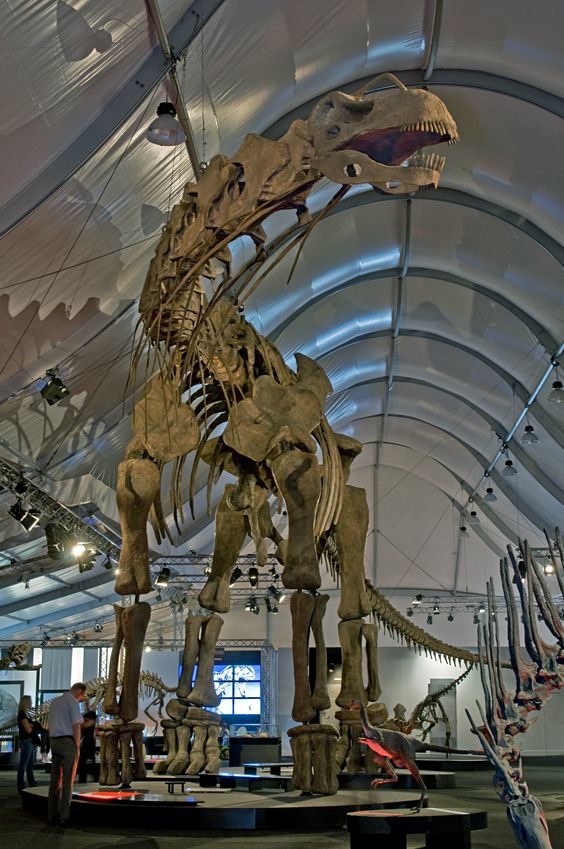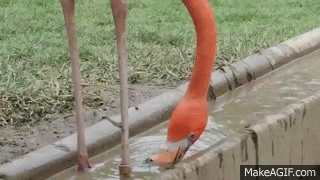This is a skeleton of a titanosaur, not quite the longest of the dinosaurs, but most certainly the heaviest! As far as we have found, we'd found no species exceeding 75 tons.
This post focuses on a neat piece of evolution called "convergent evolution", in which an unrelated species evolves similar features to deal with similar if not identical circumstances. But before we get to the one sole candidate I have in mind, let's look at the bones that made sauropods both famous and infamous among the human culture:
Skull
Small (at least in proportion to the rest of the body); Peg-shaped teeth used to strip down leaves; No mechanism to make chewing possible
Tail
Long; Usually tapering into a whip
In this alternate scenario, dinosaur evolution came later than back home, which means that when the comet slammed the Earth 65 million years ago, geology and biology were Tithonian, not Maastrichtian. (It also helps that the comet worked alone in this scenario--which means no Deccan eruptions and no sea-level regression.)
The sauropods became extinct in this scenario, but at the time, there was a group of dinosaurs small enough to survive the catastrophe and, once the ash had been cleared, become the giants of South America, Africa, India, Australia and Antarctica:
Dryosauridae.
The most notable example of this family, Dryosaurus, may be fleet-footed and bipedal, but recent evidence has found that early sauropods were just like that before the Jurassic gave them the chance to grow out of bounds.
However, because Dryosaurus occupied a different niche, it was anatomically different. The skull had a horny beak and teeth situated on the cheeks, which would be useful for chewing. The tail was stiff, useful for balance.
And yet, in this alternate scenario, it was the dryosaurids that would give rise to the alternate titanosaurs, complete with elongated necks and tails. Would they need to change their skulls and loosen up their tails to satisfy this given niche?







